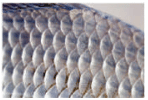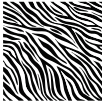Science Olympiad Previous Year Questions - 1 | Science Olympiad for Class 3 PDF Download
Note: The questions provided in this document are similar to the questions that were asked in the actual Olympiad exam. So, we recommend you study these for your Olympiad preparation.
Logical Reasoning Section
Q1: Look at this pattern of shapes.  Which of these shows the same kind of pattern?
Which of these shows the same kind of pattern?
(a) 
(b) 
(c) 
(d) 
 View Answer
View Answer 
Ans: (a)
The pattern repeats after 2nd figure. Only pattern in option (A) follows this pattern.
Q2: Which of the following words can be created using the letters from the word "NATIONAL"?
(a) ACTION
(b) ONLINE
(c) LATINA
(d) ANALOG
 View Answer
View Answer 
Ans: (c)
- The word "NATIONAL" contains the letters N, A, T, I, O, N, A, L.
- Among the options, "LATINA" can be formed using these letters.
- Other options like "ACTION", "ONLINE", and "ANALOG" cannot be fully constructed from the letters in "NATIONAL".
- Thus, the correct answer is "LATINA".
Q3: Which of the following alphabets is not hidden in the given figure? (a) X
(a) X
(b) V
(c) W
(d) K
 View Answer
View Answer 
Ans: (d)
So, alphabet K is not hidden in the given figure.
Q4: If 'Ball' is called 'Cap', 'Cap' is called 'Pencil', 'Pencil' is called 'Eraser', 'Eraser' is called 'Bag', then Rohan will wear _______ in sunlight.
(a) Cap
(b) Eraser
(c) Pencil
(d) Bag
 View Answer
View Answer 
Ans: (c)
In sunlight Rohit will wear cap but cap is called pencil.
Q5: Find the odd one out.
(a) River
(b)Pond
(c) Lake
(d) Rain
 View Answer
View Answer 
Ans: (d)
Rain is source of water. Water gets; collected in pond, river and lake. So, rain is different.
Science Section
Q6: Select the correct match.
(a) Weak stem - Coconut
(b) Soft and weak stem - Gulmohar
(c) Stem grows along the ground - Grapevine
(d) Woody trunk - Mango
 View Answer
View Answer 
Ans: (d)
- Woody trunk refers to plants that have a hard, thick stem, which is typical for trees.
- The Mango tree is a prime example of this, as it has a strong, woody trunk that supports its height and branches.
- In contrast, options like Coconut and Gulmohar do not have woody trunks, and Grapevine grows along the ground, making them incorrect matches.
- Thus, the correct match is the Mango with a woody trunk.
Q7: Exhaled air is impure as it has less of ______ gas and more of ______ gas as compared to inhaled air.
(a) Oxygen, Nitrogen
(b) Oxygen, Carbon dioxide
(c) Carbon dioxide, Oxygen
(d) Nitrogen, Oxygen
 View Answer
View Answer 
Ans: (b)
- Exhaled air contains less oxygen because our body uses it during respiration.
- It has more carbon dioxide since this gas is a byproduct of the energy production process in our cells.
- Inhaled air has a higher concentration of oxygen and a lower concentration of carbon dioxide.
- This difference is crucial for maintaining the body's breathing balance and overall health.
Q8: The thick fur of animals living in colder regions.
(a) Makes them appear beautiful
(b) Protects them from enemies
(c) Keeps them warm
(d) Protects them from water
 View Answer
View Answer 
Ans: (c)
The thick fur prevents the body heat from escaping into the environment and therefore, helps those animals to cope up with the extreme climate conditions.
Q9: Butterflies visit flowers to ___________.
(a) get nectar
(b) get shelter
(c) smell the flower
(d) None of these
 View Answer
View Answer 
Ans: (a)
The sweet nectar present in flowers which is used as food by the butterflies.
Q10: Mr. Yogesh purchased a large water tank constructed from plastic. He selected plastic instead of other materials because it:
(a) Does not rust
(b) Does not break easily
(c) Does not absorb water
(d) All of these
 View Answer
View Answer 
Ans: (d)
- Plastic is a popular choice for water tanks because it has several advantages. First, it does not rust, which is a common issue with metal tanks.
- Secondly, plastic is durable and does not break easily, making it suitable for outdoor use.
- Additionally, plastic does not absorb water, ensuring that the water remains clean and uncontaminated.
- Therefore, the correct answer is that all these benefits make plastic a preferred material for water tanks.
Q11: Look at the picture and identify the feature. (a) Scales
(a) Scales
(b) Fur
(c) Hair
(d) Feather
 View Answer
View Answer 
Ans: (a)
Scales protect the animals from physical harm.
Q12: Which of these groups of animals is warm-blooded?
(a) Reptiles
(b) Amphibians
(c) Birds
(d) Fish
 View Answer
View Answer 
Ans: (c)
Birds and mammals are the only groups of animals which are warmblooded, rest all are cold-blooded.
Q13: Select the INCORRECT statement.
(a) You should never play or hide in dark or isolated places.
(b) You should not lock the door from inside the room when you are alone.
(c) You should never try to open the door of the car when it is moving.
(d) You should never take a shower before and after swimming.
 View Answer
View Answer 
Ans: (d)
- The statement that you should never take a shower before and after swimming is incorrect.
- In fact, it is recommended to take a shower before swimming to rinse off any dirt and oils, and after swimming to wash off chlorine or saltwater.
- The other options highlight important safety practices, such as avoiding dark places and not locking doors when alone for safety reasons.
- Thus, option (d) is the only statement that is not true.
Q14: Snakes hear through ________ on the ground.
(a) Soil
(b) Rocks
(c) Vibrations
(d) Current
 View Answer
View Answer 
Ans: (c)
Snakes do not have ears. Their skin senses sound vibrations on the ground and the brain interprets the message.
Q15: Which of the following items can you purchase at a post office?
(a) Inland letter
(b) Postcard
(c) Stamp
(d) All of these
 View Answer
View Answer 
Ans: (d)
- All of these options are available for purchase at a post office. This includes an inland letter, which is used for sending letters within the country, a postcard for sending short messages, and stamps which are necessary for mailing items.
- Post offices serve as a one-stop shop for various mailing needs, making it convenient for customers.
- Therefore, the correct answer is that you can buy all of these items from a post office.
Q16: Precipitation is the process in which:
(a) Water changes into its gaseous form
(b) Water vapour changes into its liquid form
(c) Water in the form of rain, hail, or snow falls on Earth
(d) Water vapour condenses into clouds
 View Answer
View Answer 
Ans: (c)
- Precipitation refers to the process where water falls from the atmosphere to the Earth's surface.
- This can occur in various forms such as rain, hail, or snow.
- It is a crucial part of the water cycle, helping to replenish water sources.
- Options (a), (b), and (d) describe different processes related to water but do not define precipitation.
Q17: Which of these features helps the bird to fly?
(a) Light weight
(b) Streamline shapes
(c) Both (a) and (b)
(d) None of these
 View Answer
View Answer 
Ans: (c)
The light body weight, the streamline body shape helps to penetrate air and modified forelimbs are transformed wings which help the birds to fly.
Q18: Most of the animals in _______ are sandcoloured.
(a) polar regions
(b) mountains
(c) forests
(d) deserts
 View Answer
View Answer 
Ans: (d)
This serves as a camouflage for animals in desert for camels to unpredict themselves from predators.
Q19: Identify the animal from the skin pattern. (a) Lion
(a) Lion
(b) Zebra
(c) Cat
(d) Snake
 View Answer
View Answer 
Ans: (b)
A zebra has alternate black and white randomly-shaped stripes on the skin.
Q20: Eggs and meat are good sources of ________________.
(a) vitamins
(b) proteins
(c) minerals
(d) carbohydrates
 View Answer
View Answer 
Ans: (b)
Egg and meat are the richest sources of proteins.
Q21: Feathers that are small, fluffy, soft, and keep the bird’s body warm are called ________.
(a) Flight feathers
(b) Warm feathers
(c) Body feathers
(d) Down feathers
 View Answer
View Answer 
Ans: (d)
- Down feathers are the type of feathers that are small, fluffy, and soft.
- They provide excellent insulation, helping to keep the bird's body warm.
- Unlike flight feathers, which are long and stiff, down feathers are designed for warmth.
- These feathers are found underneath the outer feathers and are crucial for temperature regulation.
Q22: Unscramble the letters in the given options to find out the name of a cooking method that does NOT require water.
(a) ESATIMNG
(b) ILIBONG
(c) OSARTGIN
(d) None of these
 View Answer
View Answer 
Ans: (c)
- The correct answer is OSARTGIN, which unscrambles to STIR-FRYING.
- Stir-frying is a cooking method that uses a small amount of oil and does not require water.
- In contrast, boiling (option b) and steaming (option a) both involve water.
- Thus, the only method listed that does not need water is stir-frying.
Q23: If we use too much of refined oil every day for cooking, there are chances that: (a) We lose weight
(a) We lose weight
(b) We gain weight
(c) We grow tall
(d) We become muscular
 View Answer
View Answer 
Ans: (b)
- Using excessive refined oil in our daily cooking can lead to an increase in calorie intake.
- Refined oils are high in fats, which can contribute to weight gain if consumed in large amounts.
- When we consume more calories than our body needs, the excess is stored as fat, leading to weight gain.
- It's important to use oils in moderation to maintain a healthy weight.
Q24: Select the option that accurately matches means of personal and mass communication.
(a) Landline phone and letter
(b) Newspaper and Radio
(c) Magazine and Television
(d) Cinema and Post card
 View Answer
View Answer 
Ans: (d)
- Cinema is a form of mass communication that reaches a large audience through films.
- Post card is a personal communication method, allowing individuals to send messages directly to others.
- The pairing of Cinema and Post card effectively illustrates the contrast between mass and personal communication.
- Other options do not correctly represent this distinction, as they either mix two personal methods or two mass methods.
Q25: Study the given relationship and select the option that correctly identifies X.
Kidney: Skin :: Brain: X
(a) Heart
(b) Skull
(c) Spinal cord
(d) Muscles
 View Answer
View Answer 
Ans: (c)
- The relationship shows that the kidney is protected by the skin.
- Similarly, the brain is protected by the skull.
- Among the options, the spinal cord is the correct answer as it is associated with the brain in the central nervous system.
- The other options do not provide the same protective relationship as the kidney and skin.
Q26: I am a desert animal, living in hot deserts. I have thick skin with very little hair. Who am I?
(a) Frog
(b) Snake
(c) Camel
(d) Fish
 View Answer
View Answer 
Ans: (c)
Camel is called ‘The Ship of the Desert.’
Q27: The longest part of human digestive system is:
(a) Rectum
(b) Small intestine
(c) Stomach
(d) Large intestine
 View Answer
View Answer 
Ans: (b)
Small intestine is longest part of our digestive system which is around 7 meter in length.
Q28: Select the odd one out based on the amount of light they permit to pass through them.
(a) Wooden log
(b) Iron sheet
(c) Butter paper
(d) Notebook
 View Answer
View Answer 
Ans: (c)
- Butter paper is the only option that allows light to pass through, making it translucent.
- Wooden log and iron sheet are both opaque, meaning they do not let any light through.
- Notebook is also opaque as its pages are made of paper.
- Thus, butter paper stands out as it is the only material that is not completely opaque.
Q29: In nature, plants and animals rely on one another. Certain animals consume plants while others prey on different animals. This creates a ________.
(a) Food trail
(b) Food group
(c) Food chain
(d) Food series
 View Answer
View Answer 
Ans: (c)
- The term food chain describes the interconnected relationships between plants and animals in an ecosystem.
- In a food chain, plants are the primary producers, and they are eaten by herbivores (plant-eating animals).
- These herbivores can then be consumed by carnivores (meat-eating animals), creating a chain of energy transfer.
- This concept illustrates how energy and nutrients move through the ecosystem, highlighting the dependence of different species on one another.
Q30: Which among the following factors does NOT influence the weather of a location?
(a) Sun
(b) Rain
(c) Clouds
(d) Rocks
 View Answer
View Answer 
Ans: (d)
- Rocks do not play a direct role in determining the weather conditions of a place.
- The Sun, Rain, and Clouds are all essential elements that significantly impact weather patterns.
- For example, the Sun provides heat and light, while clouds can indicate precipitation.
- In contrast, rocks are part of the landscape but do not influence weather changes.
Achiever’s Section
Q31: This animal needs to eat a lot of bamboo shoots at one time. So, this animal needs to live alone to avoid competition for limited food. Identify the animal.
(a) Koala beer
(b) Kangaroo
(c) Giant panda
(d) Gorilla
 View Answer
View Answer 
Ans: (c)
The giant panda lives the major part of life in solitude to avoid competition
Q32: Which of these cannot hear, smell and taste?
(a) Monkeys
(b) Dolphins
(c) Sponges
(d) Butterflies
 View Answer
View Answer 
Ans: (c)
Sponges are primitive and simple animals and lack organs for hearing, smell and taste.
Q33: How are long ears of elephants helpful to them?
(a) They regulate digestion
(b) They regulate body temperature
(c) They improve vision
(d) None of these
 View Answer
View Answer 
Ans: (c)
The large ears of elephants have blood vessels that help in regulating body temperature.
Q34: Which of these senses makes dogs useful for police and detectives?
(a) Sight
(b) Smell
(c) Taste
(d) Hearing
 View Answer
View Answer 
Ans: (b)
The dogs have excellent sense of smell and can be relied to follow the smell for kilometres.
Q35: It is considered that the process of digestion is faster Inside the stomach than outside. This is due to:
(a) The amount of digestive juices produced in the stomach in the presence of food is much more.
(b) Then digestive juices inside thstomach are acidic, while outside they are alkaline.
(c) The food is churned the stomach thereby increasing the surface area for quicker enzyme action.
(d) The digestive juices when kept outside the stomach become inactive.
 View Answer
View Answer 
Ans: (c)
The food is churned the stomach thereby increasing the surfacearea for quicker enzyme action.
|
43 videos|103 docs|63 tests
|
FAQs on Science Olympiad Previous Year Questions - 1 - Science Olympiad for Class 3
| 1. What is the Science Olympiad for Class 3? |  |
| 2. How can I prepare for the Science Olympiad? |  |
| 3. What topics are typically covered in the Class 3 Science Olympiad? |  |
| 4. Are there any specific books recommended for Class 3 Science Olympiad preparation? |  |
| 5. What skills does the Science Olympiad help develop in students? |  |
















